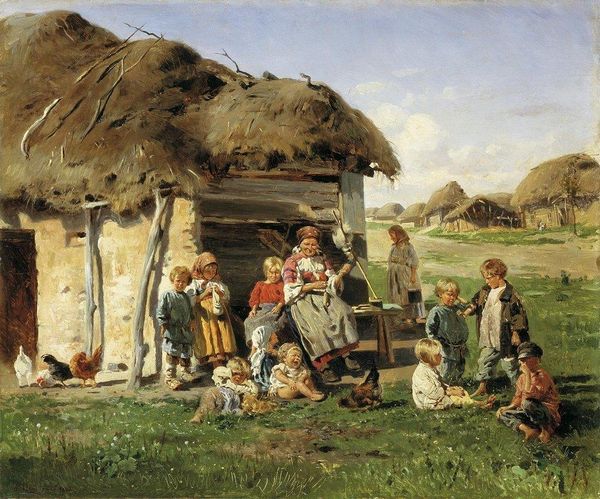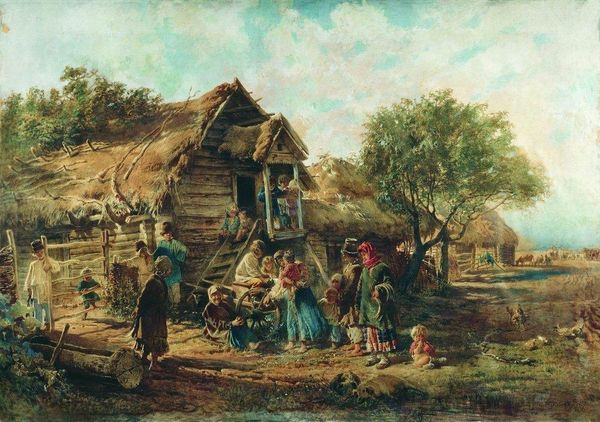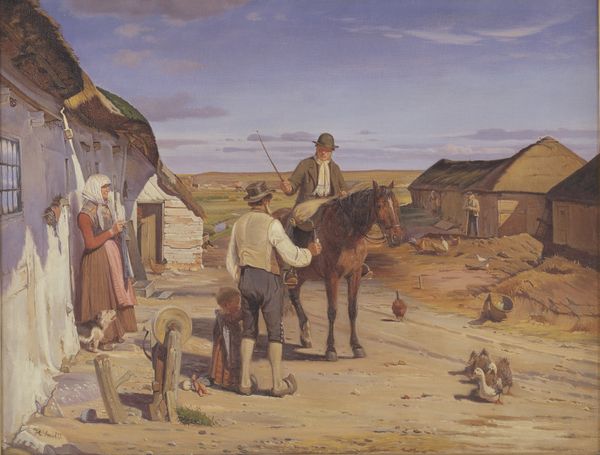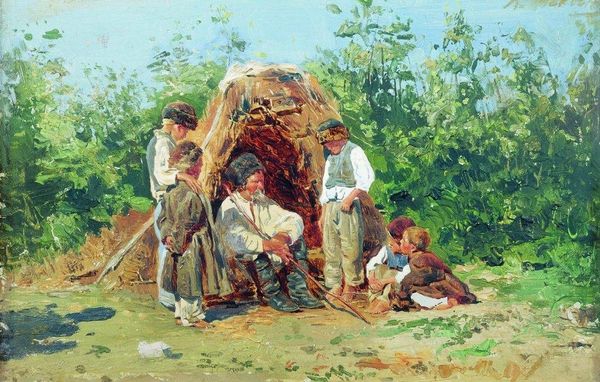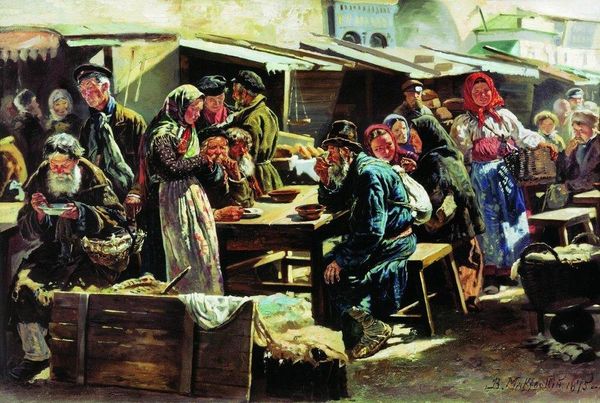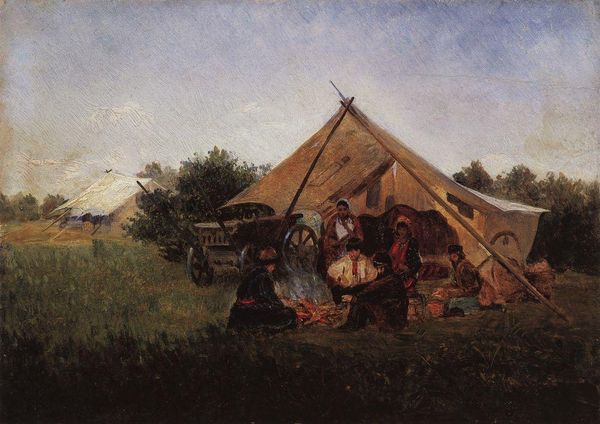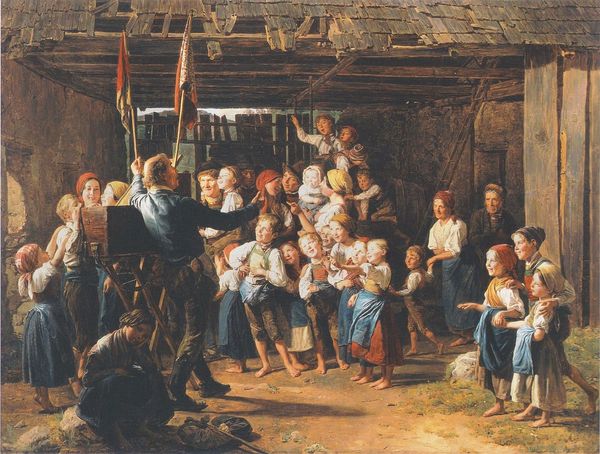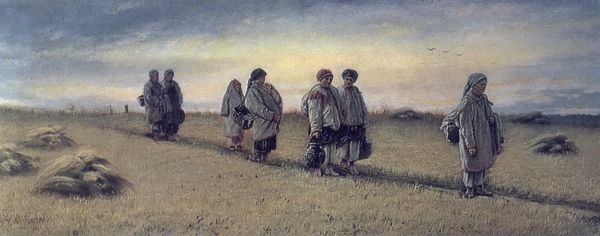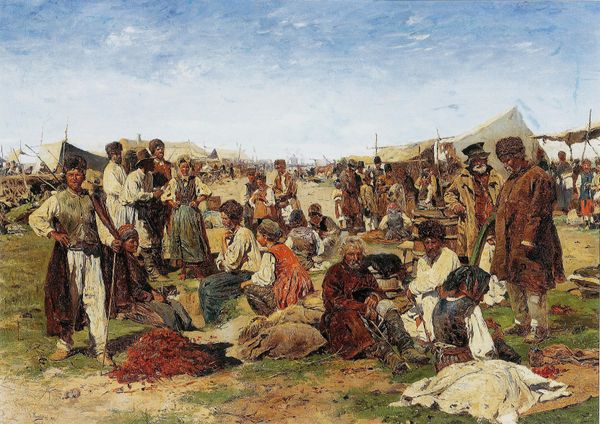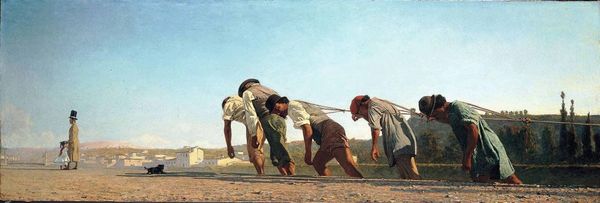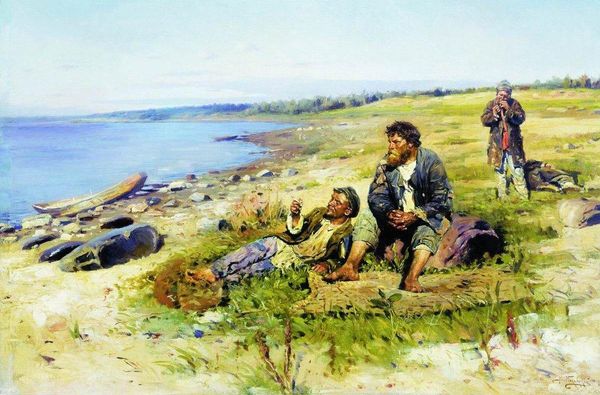
Dimensions: 53 x 71 cm
Copyright: Public domain
Editor: So here we have Vladimir Makovsky's "Knuckles" from 1870. It's an oil painting currently held at the Tretyakov Gallery. I'm struck by how it depicts such a seemingly simple, candid scene, yet it feels imbued with something deeper. What do you see in this piece? Curator: What immediately grabs me is not just the children playing, but the context. The dilapidated state of the buildings behind them, for example. This speaks volumes about the social conditions of the peasantry in post-reform Russia. Do you think Makovsky is simply representing childhood, or perhaps something more pointed? Editor: I hadn't really considered that. I was more focused on the kids themselves. But now that you mention it, there is a contrast between the apparent joy of the game and the visible poverty surrounding them. Curator: Precisely. This contrast is crucial. Makovsky was part of the Peredvizhniki movement, a group of artists committed to depicting Russian life realistically, with a critical eye towards social inequality. How does this context inform your understanding of the children's activity? Is it merely a game? Or something else? Editor: Maybe the game represents a form of escapism, or perhaps a symbol of resilience in the face of hardship? It gives a new weight to it. Curator: Exactly! These children playing *knuckles* are not just figures in a pastoral scene, but individuals navigating a complex socio-economic reality. Seeing art like this, is what makes art worth diving in to, isn't it? Editor: Absolutely! Thanks for shining some light on that context. I will definetly do some more reading.
Comments
No comments
Be the first to comment and join the conversation on the ultimate creative platform.
